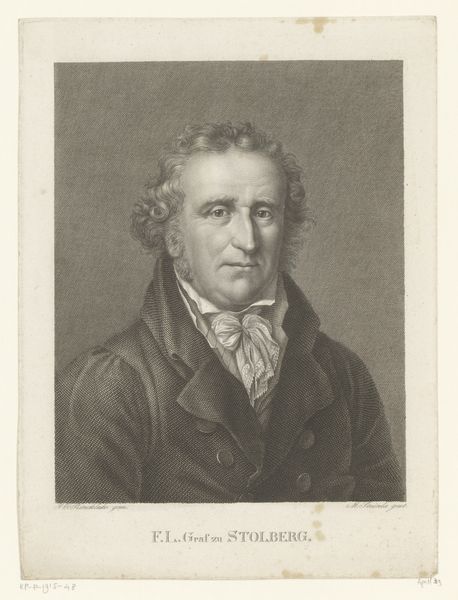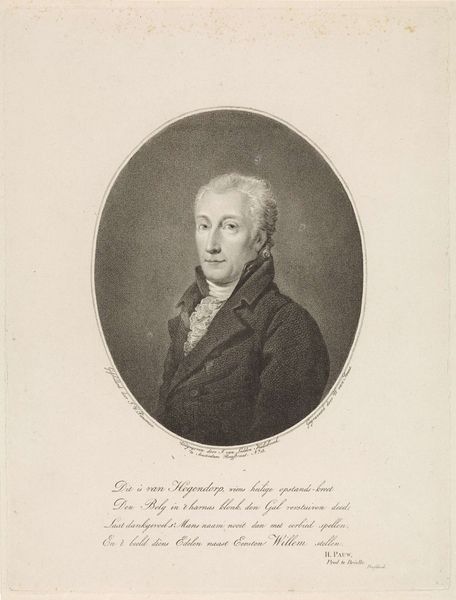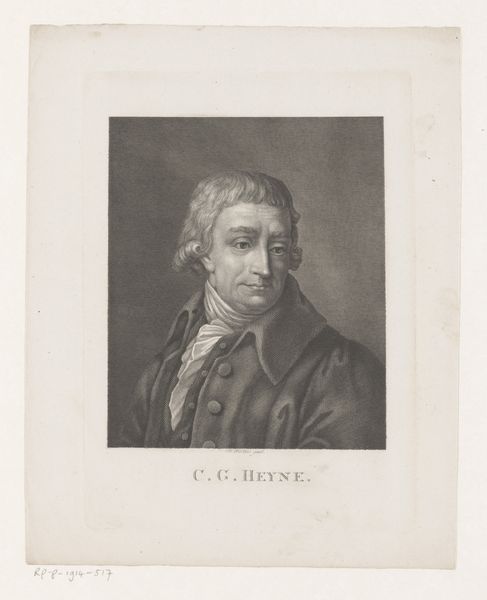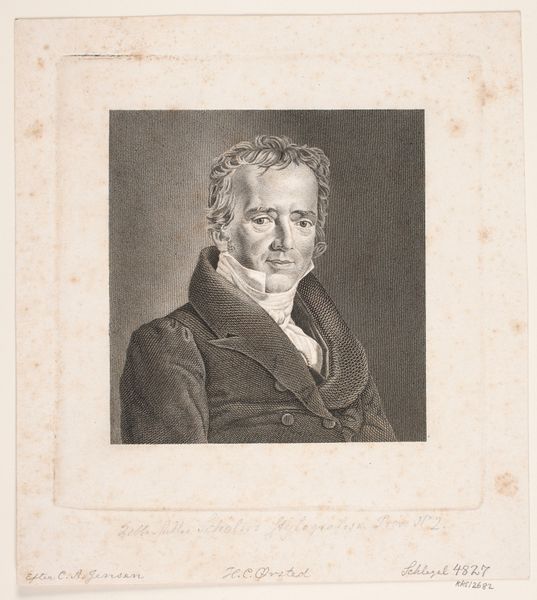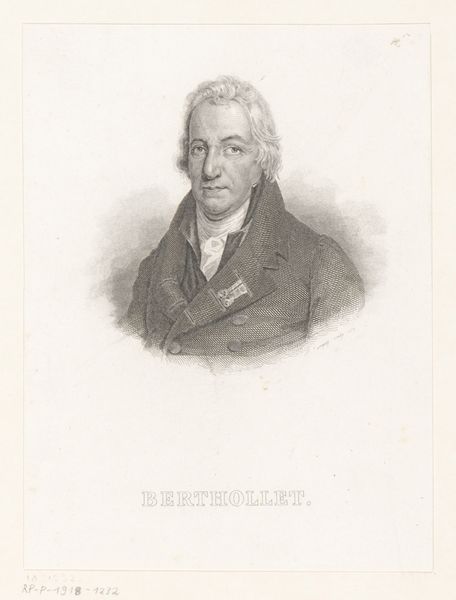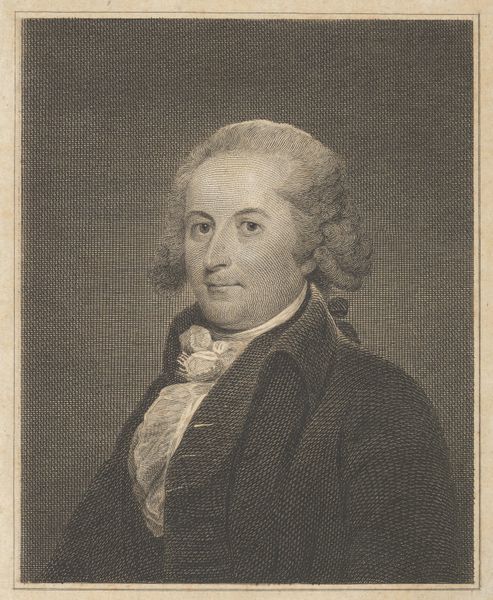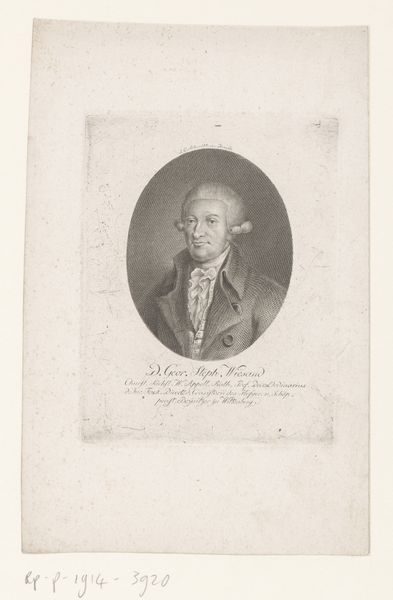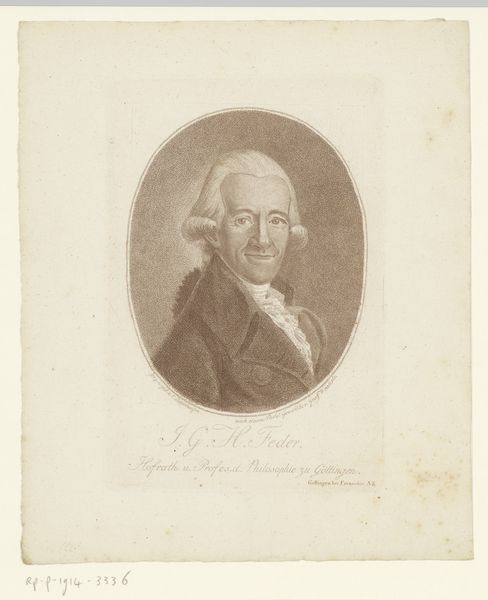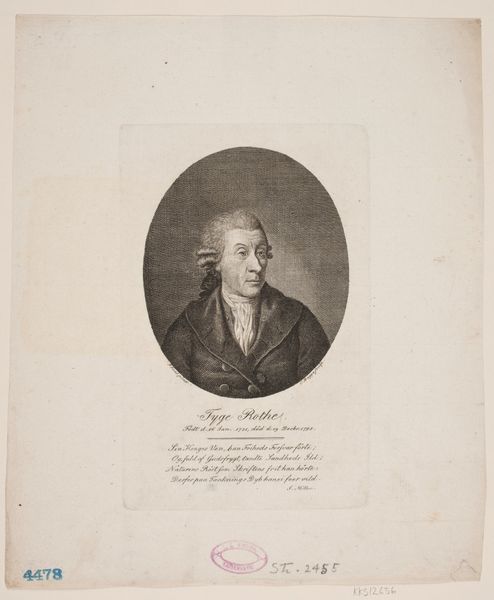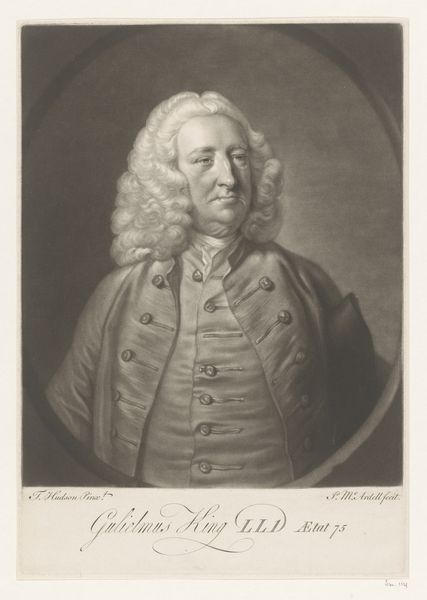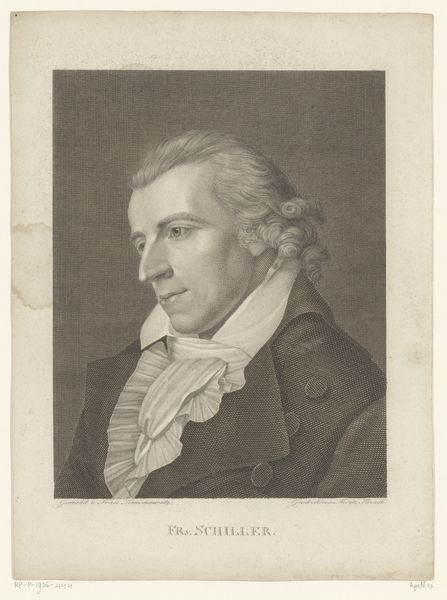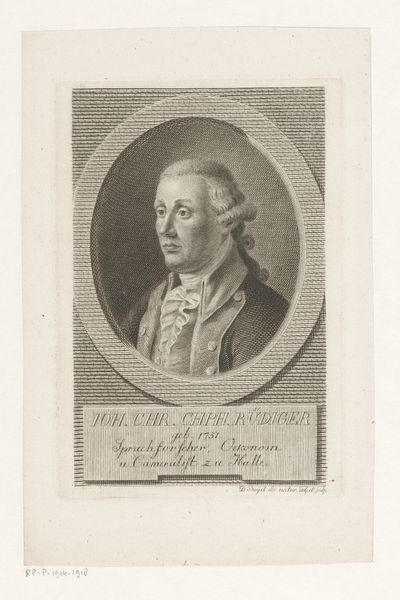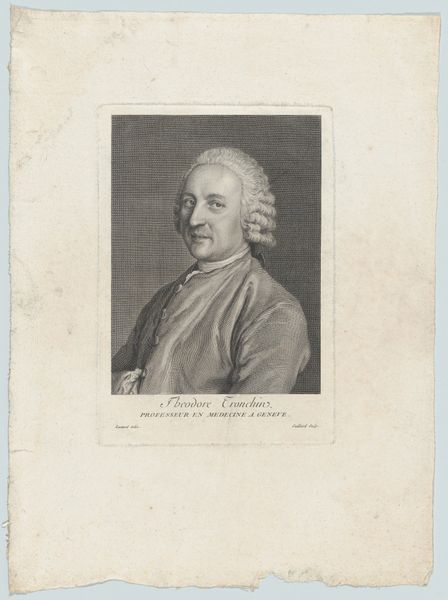
print, engraving
#
portrait
#
print photography
#
neoclacissism
# print
#
academic-art
#
engraving
#
realism
Dimensions: height 250 mm, width 184 mm
Copyright: Rijks Museum: Open Domain
Editor: This is "Portret van Moritz August von Thümmel," a print made sometime between 1792 and 1816 by Johann Friedrich Wilhelm Müller, now at the Rijksmuseum. It’s a fairly straightforward portrait. What can you tell me about the subject? Curator: I see a study in the construction of masculinity and intellect during the late Enlightenment. Thümmel, the subject, a celebrated author and jurist, is rendered with a cool, almost detached gaze. Notice the deliberate lack of flamboyance in his attire – it signals reason and civic duty rather than aristocratic indulgence. Editor: Civic duty? In a portrait? Curator: Absolutely. Consider the historical backdrop: the French Revolution, the rise of republics… Portraits of this era weren't just about capturing likeness; they were statements about the subject's values and place in a changing society. What's missing tells a story, too. We could see the restraint of detail as a means to convey seriousness and objectivity. The very *lack* of excess becomes a virtue, projecting an image of a man dedicated to the common good through reason. Editor: That’s a really interesting read. It’s amazing how much social context is packed into something that looks so simple. I guess you see it as pushing back against the excess and the focus on aristocracy of the pre-Revolution era? Curator: Precisely! It presents us with an emergent, modern identity, rooted in intellect and service rather than birthright and display. Editor: I’ll definitely look at these portraits differently from now on. Thanks for this different approach! Curator: My pleasure. Remembering that even simple artistic choices carry a social load helps unlock the deeper meanings of artworks from the past.
Comments
No comments
Be the first to comment and join the conversation on the ultimate creative platform.
